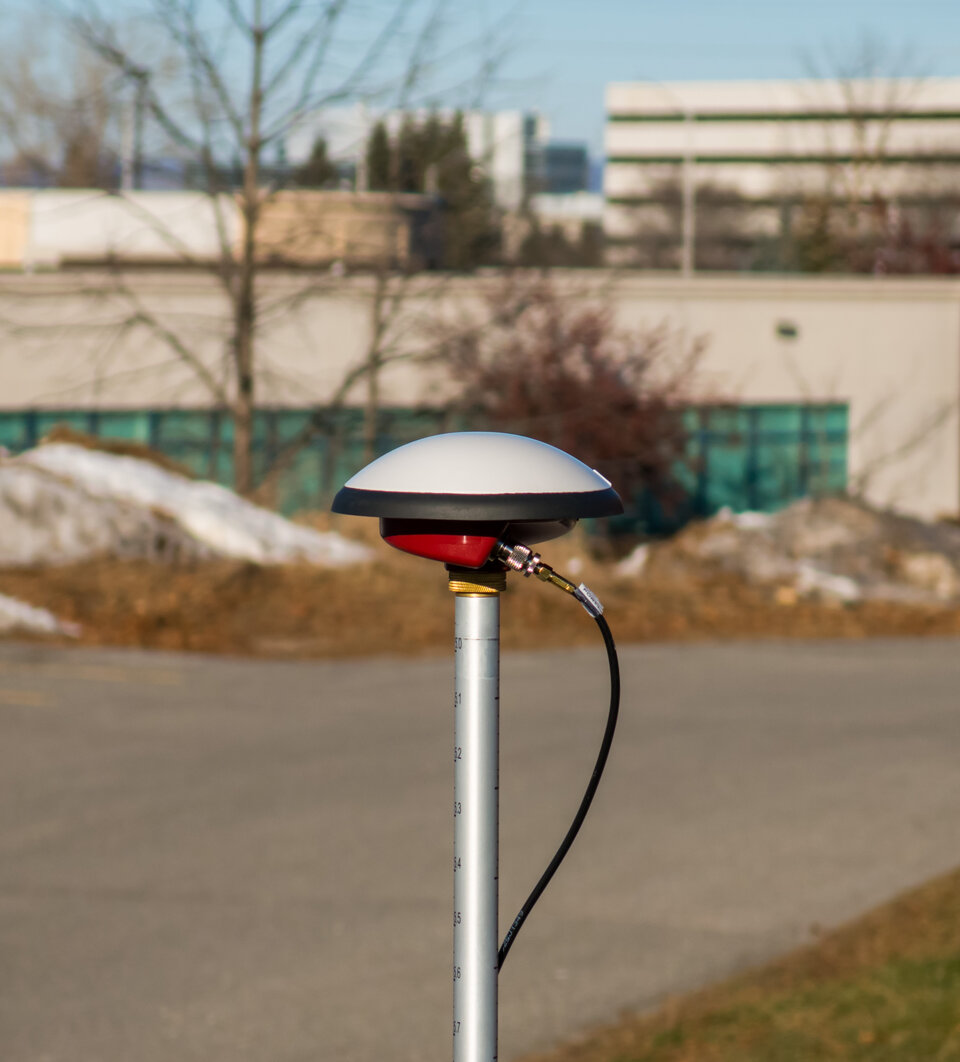Satnav antenna built for ends of the Earth
A new ESA-supported wide-bandwidth satnav antenna has been designed to receive both satellite and augmentation signals from anywhere in the sky, even down to just a couple of degrees above the horizon.
With a growing number of satnav constellations in operation, Canada-based Tallysman Wireless’s new VeroStar antenna aims to pick up all available signals, as well as support the availability of L-band correction service signals. Its development was supported through ESA’s Navigation Innovation and Support Program (NAVISP) programme.

The precision of GNSS fixes is routinely sharpened with correction signals from augmentation systems, such as Europe’s EGNOS and the US WAAS, which also provide ongoing integrity (or reliability) information for high-accuracy and safety-of-life uses, such as aircraft descents. However, these augmentation signals are transmitted by geostationary satellites, hanging at fixed points above the equator, meaning that they become less visible for receivers in the far north or south.

“If you think of a Global Navigation Satellite System (GNSS) receiver as resembling a camera, then the antenna would be the lens,” explains Allen Crawford of Tallysman. “Now, you might have an excellent top-of-the-range camera, but if it doesn’t have a clean, distortion-free, and well-focused lens, then all you’re going to get are blurred pixels that no post-processing software can fix.
“So our antenna is like a lens, except it gathers radio signals instead of light – and it is the first step in the measurement process. We want the antenna to reproduce the received satellite signals as precisely as possible, in terms of amplitude and of signal phase, on a fully representative basis, for the receiver to process.”
Available in various models and sizes, including pole-mounted, surface-mounted, and embedded versions, the VeroStar is aimed at high-performance mobile applications, such as land surveying, precision farming, maritime and autonomous vehicle navigation, typically requiring positioning accuracy down to a few centimetres.

“Different customers have differing requirements,” adds Julien Hautcouer of Tallysman. “There are plenty of GNSS antennas that work on a ‘good enough’ basis – for instance, antennas on top of cars just need to give a rough position, then the navigation receiver uses its map to estimate what street you’re on.”
“What we wanted to do, starting from scratch with this new design, for high-precision mobile users, was to be able to employ as many satellite signals from as many constellations as possible – not just GPS but also Galileo, the Russian, Chinese, Indian, and Japanese systems, plus correction service signals – and this requires good stable performance across a very wide bandwidth.”

“We want it to provide nothing but the pure right-hand circular signals, minimising any misleading reflected ‘multipath’ signals,” notes Gyles Panther, CTO of Tallysman. “We also paid special attention to the symmetry of our antenna, so that satellite signals are treated in exactly the same way, no matter where in the sky the signals are coming from. It’s like looking through a good quality wine glass when you rotate it in front of your eyes, and your view through it stays the same.”
At the same time, the modern radio spectrum is very crowded, so the design team paid particular attention to filtering out radio interference that could cause a situation where a drone might be forced down by local radio noise.
The VeroStar design is based on eight curled ‘petals’ of printed circuit boards, inspired by the post-war Alford loop antenna, which was originally designed for simultaneous transmission of multiple FM radio signals.

“The Tallysman team performed a long optimisation process using electromagnetic modelling to define the final shape for manufacturing,” notes ESA navigation engineer Nicolas Girault, the project’s technical officer. “They ended up with an inexpensive, easy to repeat process, which is ideal, really.”
The design maximises antenna efficiency and performance, adds ESA engineer Damiano Trenta: “Its rotational symmetry geometry and wideband behaviour help to provide a stable phase centre over frequency and angular range. Optimisation of the petals’ shape helps to improve the minimum gain at very low elevation angles, compared with the current products on the market, and keeps a very low cross-polar level for multipath mitigation. ”
Subsequent production line checks revealed this value remained consistent across all antennas.

The VeroStar models are now being marketed commercially both individually and as an element within customer products. VeroStar development was supported through NAVISP Element 2 – aiming to boost Member State competitiveness through the development of improved or innovative commercial products – as well as the Canadian Space Agency.


